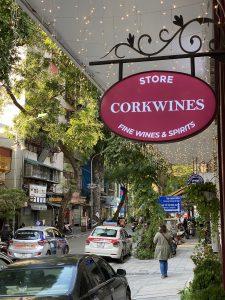
If you’re a newbie to the world of wines, you might find the sheer volume of wine varieties available utterly overwhelming. Among the literally thousands of wines out there, how do you determine what’s what? And how do you choose a good wine to try for the first time?
In this post, we’re going to give you a basic overview of the different types of wines, so next time you’re in the wine aisle, you won’t panic. شرح لعبة بلاك جاك
Back to Basics
First, what is wine?
Simply put, wine is the fermented juice of a wine grape. قمار A wine grape is far different from your grocery store-variety grape: it’s small, sweet, thick-skinned, and contains many seeds
There are two types of grapes wine is made from: white grapes (which are actually green-coloured) and black grapes (which are actually red-coloured). And within those types of grapes, there are hundreds of varieties used to make thousands of wine varietals and blends
Many other factors influence a wine’s character, like the wine region, tannins, sweetness, acidity, body, and flavours, but we won’t get into the complexities of all that right now. Instead, let’s keep it simple and take a look at the six main types of wines:
1. Red Wines
Red wines are made from black grapes fermented with grape skins (which is where the red colour of the wine comes from), seeds, and stems. Red wine is high in tannins, which causes that bitter, dry taste in your mouth after you take a sip.

Starter Picks: Cabernet Sauvignon, Merlot, Pinot Noir, Zinfandel, Chianti, Beaujolais
Food Pairings: Pair red wine with hearty dishes containing red meat, such as BBQ ribs, burgers and steak, pasta, and pizza
Pro Tip: It’s best to drink red wines at, or slightly below, room temperature. This is because if you chill red wine, the tannins it contains become bitter
Good to Know: The darker or newer the wine, the more tannins it has. Go for an older wine, which will taste less dry and bitter.
2. White Wines

White wines are made from both white grapes and black grapes. But while red wines are fermented with grape skins, white wines are not. Instead, the skins are separated so only the clear grape juice is used. White wine has few tannins; its acidic nature is what outlines its fresh, crisp and tart flavours
Starter Picks: Chardonnay, Sauvignon Blanc, Pinot Grigio, Riesling
Food Pairings: White wine goes best with lighter dishes, such as poultry, fish and other seafood, curries, tacos, cheese, salad, popcorn, and chip
Pro Tip: Chill white wine before drinking to bring out its flavours
3. Rosé Wines

Rosé is a wine known for its blush or pink colour. This pretty colour is created when the juice of black grapes is fermented with the skins for a very short period of time, from a few hours to a few days until the juice turns colour. Like white wine, it is also low in tannins, though some rosés are dry. لعبة القمار ورق Rosé is a popular crowd-pleaser, especially for summertime parties, and a great choice as a starter wine because of its light, sweet flavour.
Food Pairings: Rosé goes well with light dishes and snacks, including poultry, fish, fruit, chips and salsa, and cheese
Good to Know: A common misconception about rosé is that it is made by mixing red and white wines, but this practice is actually a big no-no in the wine world
4. Sparkling Wines

Sparkling wines are carbonated wines, hence the nickname “bubbly.” Sparkling wines are made from black and white grapes, and carbon dioxide is a naturally occurring byproduct of fermentation. The most well-known sparkling wine is champagne, which is often used in celebrations like New Year’s and weddings
Starter Picks: Champagne, Prosecco
Food Pairings: Light foods, such as soft cheeses, seafood, including smoked salmon and shrimp, salad, fresh fruit, and popcorn
Pro Tip: Ever wonder why champagne is always served in tall, slender glasses? It’s because these types of glasses help retain the temperature and the bubbles of sparkling wine
Good to Know: Sparkling wines are named for the region where they are produced, such as the province of Champagne in France.
Things get a little fuzzy in the next two categories; this is because the lines tend to blur on what counts as a dessert wine. You’ll often see dessert wines and fortified wines grouped together, and the names sometimes used interchangeably, but it’s worth noting both types of wine have their own distinctive characteristics.
5. Dessert Wines
As the name suggests, dessert wines are very sweet wines that are drunk after a meal with (and sometimes as) dessert.
Starter Picks: Icewine, Moscato
Food Pairings: Soft cheeses, cake, vanilla pudding, biscotti, chocolate, and crème brûlée.
Good to Know: Dessert wines include any sweet wine, which is why our next category, fortified wines, is sometimes included
6. Fortified Wines
Fortified wines are wines with spirits like brandy added in during the fermentation process. Because these wines are sweetened by the alcohol, the ones with lower alcohol content are considered dessert wines and are also paired with desserts
Starter Picks: Port, Sherry, Madeira, Marsala
Food Pairings: Baked goods like tarts, chocolate, cheese, nuts and other desserts.
Good to Know: Fortified wines have a higher alcohol content than other wines.
“When it comes to wine, I tell people to throw away the vintage charts and invest in a corkscrew. The best way to learn about wine is the drinking.”
Alexis Lichine – Wine writer and vintner
So, now that you know your basic types of wines, follow Lichine’s advice, grab a corkscrew, and introduce yourself to the world of wines with a bottle each of Corkwines’ Rosé, Cabernet Sauvignon, and Chardonnay — great starter wines minus the hefty price-tag.

